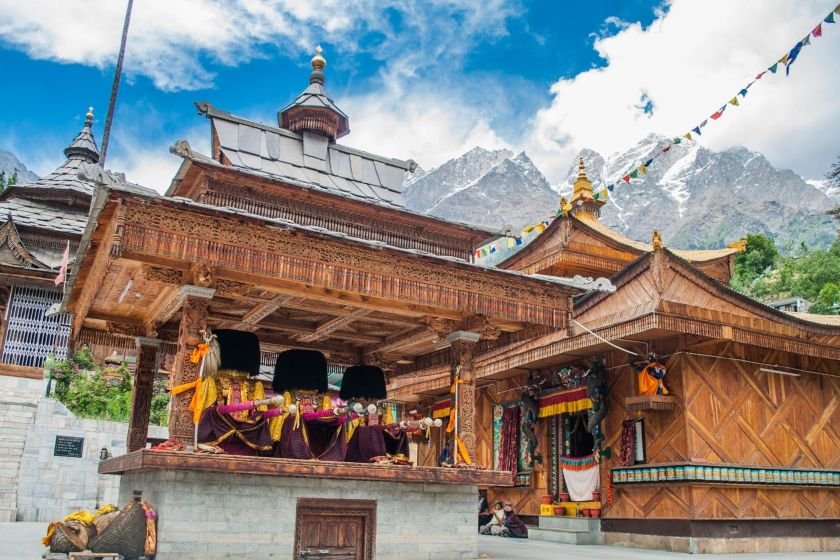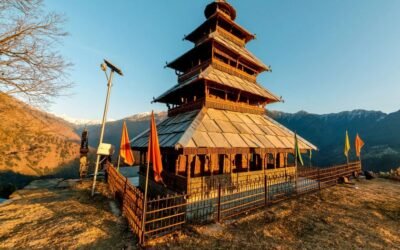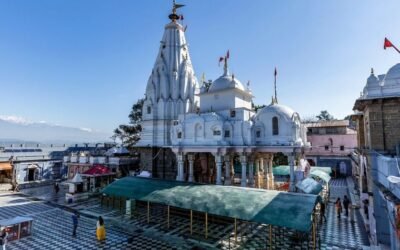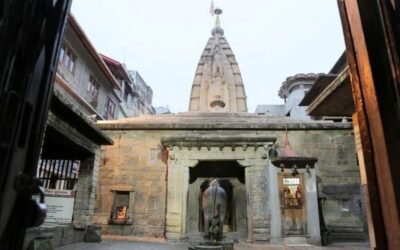Where Shiva watches over Kinnaur in cedar silence and floral devotion
Nestled in the heart of Sangla Valley, the Bering Nag Temple is a revered shrine dedicated to Lord Jagas, a local form of Lord Shiva, worshipped here as Bering Nag—the serpent deity and protector of the valley. With its intricate wooden architecture, mythic aura, and the vibrant Fulaich Festival, this temple is a spiritual and cultural anchor for the people of Kinnaur.
🌄 Location & Accessibility
- Location: Sangla Village, Kinnaur District, Himachal Pradesh – 172106
- Altitude: ~2,700 meters
- By Road: 214 km from Shimla; accessible via NH-5 and local roads to Sangla
- By Air: Shimla Airport (~267 km)
- By Rail: Shimla (~244 km); further travel by road
- On Foot: A short walk from Sangla village center through apple orchards and pine groves
🕉️ Deity & Worship
The temple is dedicated to Lord Jagas (Shiva), worshipped here as Bering Nag, the Nāga incarnation of Mahadev, revered for his protective, healing, and rain-bringing powers. He is considered the guardian of Sangla Valley, and his blessings are sought for agricultural prosperity, justice, and spiritual strength.
The goddess is worshipped in the form of three pindis, representing Maha Kali, Maha Lakshmi, and Maha Saraswati.
Devotees offer red flags, coconuts, and sweets, and the temple is especially known for fulfilling wishes of childless couples and those seeking justice. Rituals include abhishek with spring water, chanting of Shiva mantras, and seasonal offerings of flowers and grains. The temple is also a site for devta gatherings, where oracles (gurs) interpret the will of the deity.
🏛️ Architecture & Setting
The Bering Nag Temple is a classic example of Kinnauri wooden craftsmanship, featuring:
- A multi-tiered slate roof with golden finials
- Intricately carved cedar wood panels depicting serpents, deities, and floral motifs
- A stone base and elevated sanctum with a covered veranda
- A sacred courtyard used for festivals and community rituals
Set against the backdrop of snow-capped peaks and apple orchards, the temple’s location offers a serene and spiritually charged atmosphere, especially during early morning prayers when mist rises from the valley floor.
📜 Mythological Significance
According to local lore, Bering Nag is one of the ancestral serpent deities of the region, believed to have emerged from the earth to protect the valley. The temple is considered a seat of divine justice, and villagers often seek the deity’s guidance during droughts, disputes, or natural calamities.
The temple’s name is derived from “Bairing” or “Bering,” a local term for Nāga (serpent), and the deity is believed to reside in the surrounding forests and springs, blessing the land with fertility and balance.
🎉 Festivals & Celebrations
- Fulaich Festival (September): A vibrant flower festival where devotees offer seasonal blooms to the deity, accompanied by folk dances, music, and community feasts
- Mahashivratri: Celebrated with night-long bhajans, havans, and offerings of milk and bilva leaves
- Daily Worship: Morning and evening aartis, incense offerings, and chanting of Rudram and Nāga hymns
🏞️ Nearby Attractions
- Kamru Fort: A historic fort with a shrine to Kamakhya Devi
- Baspa River & Valley Trails: Ideal for riverside walks and nature photography
- Rakchham & Chitkul Villages: Scenic hamlets with rich devta traditions
- Sangla Market: A cultural hub for woolens, handicrafts, and local produce
🙏 Spiritual Experience
The Bering Nag Temple is not just a shrine—it is a serpent’s promise carved in cedar, a place where Shiva’s presence coils through the valley like mist. As you stand before the sanctum, with the scent of incense and the sound of temple bells, you feel the ancient pulse of protection, power, and peace. It is a temple where the earth breathes through wood, and the Nāga watches with eyes older than time.




